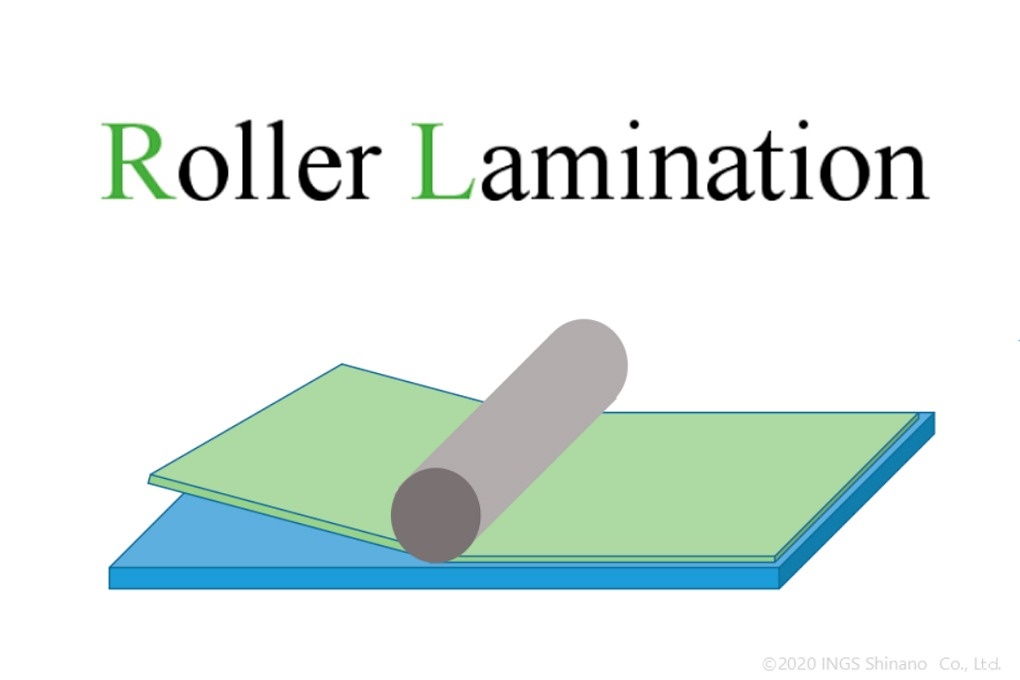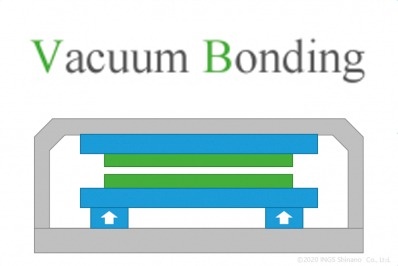Roller Lamination (Atmospheric bonding) and vacuum bonding
Ings Shinano's bonding technology can be broadly divided into roller lamination and vacuum bonding.
Since each has its own characteristics, we are considering and applying appropriate laminating technology according to the content of bonding.
We will introduce the outline of each method, application examples and restrictions.
Roller Lamination (Atmospheric bonding)
The roller lamination method is a method in which two sheets are bonded together with a roller in atmospheric pressure.
This is a laminating method suitable for laminating film-like materials, film-like materials, and film-like materials to rigid bodies.
(Example: Laminating a protective film to a film touch panel, laminating OCA to a film touch panel, laminating a functional film such as a shatterproof film / low-reflection film to a cover glass, laminating a polarizing plate to an LCD panel)

As for the alignment method, many machines perform camera alignment.
The camera recognizes each of the laminating material and the adherend, moves the stage, and rolls the roller from the film side. Since the roller is applied, the adherend is a hard rigid plate, and the film side is a mesh material, which is a stage where the pressure of the roller is transmitted.
In camera alignment, in addition to external shape recognition, various reference points can be set, such as recognition of the printed opening of the cover glass, recognition of alignment marks and patterns in the panel. We can perform alignment according to the location we want to manage, such as dimensional tolerance from the outer shape and dimensional tolerance around the screen display.
Please contact us for the size and shape of the recognition pattern that can be supported.
For large size bonding such as 1,000 x 500 mm, the laminating will be based on the external shape. Pay attention to the dimensions of the non-reference plane, as the dimensional tolerance of the member is added to the device accuracy of ± 0.3 mm.
Since the load is applied by a roller when pasting to the atmosphere, it is basically laminating between flat surfaces.
If the material has irregularities, it is difficult if the sticking surface has a convex shape, but it may be possible to handle it if it is a non-sticking surface.
It is difficult to laminate on a curved surface by atmospheric laminating, but it may be possible depending on the shape, such as a very gentle R.
Vacuum bonding

As the name implies, the vacuum bonding method is a method of laminating two materials in a vacuum.
Rigid bodies can be laminated together, and films can be laminated to bent materials, which is difficult with atmospheric lamination.
The alignment method is camera alignment, and in addition to external shape recognition, various reference points can be set, such as recognition of the printed opening of the cover glass, recognition of alignment marks and patterns in the panel.
Please contact us for the size and shape of the pattern required for alignment.
Application examples include laminating a cover glass and an LCD module, as well as laminating a functional film to a curved surface.
